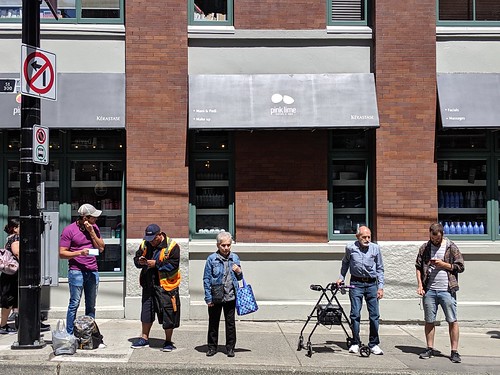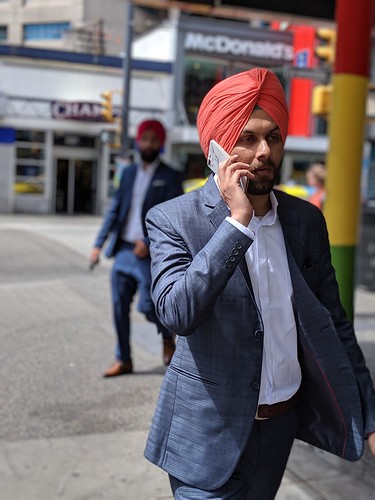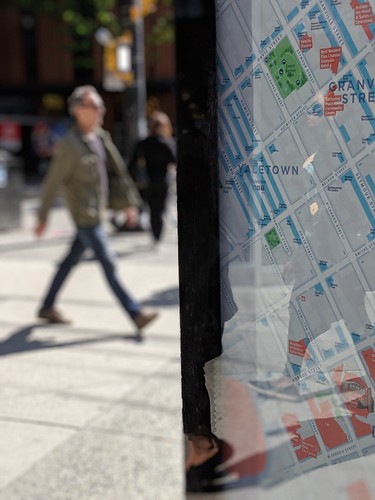My photo group was recently set a challenge to choose our Desert Island Pics.
If you're not familiar with the phrase it's based on there's a nice summary
here.
As
I'd be thrown by choosing 8 pieces of music then 8 photographs was I'd say even
harder. The format of the show is to tell the life story of the guest and the
music often relates to particular moments so I chose to pursue that approach
rather than select a set of fantastic images that really didn't mean anything
personal to me.
That
said I did look at family snapshots as very much part of my story. An
interesting point of departure from the music route as I've rarely heard home
recordings selected.
Anyway.
Where to start?
Well
as I've mentioned before growing up in front of a black and white TV gave me a
particular perspective on the world. I do remember old American comedies -
excuse me movies - broadcast on Saturday mornings: Laurel and Hardy,
Buster Keaton etc so I've chosen a famous still from a film by Harold Lloyd. I
love the view of the city below. It obviously adds to the drama but for me it's
a window on the everyday world below. In retrospect - I'll be doing a lot of
that here - it plants a seed for my interest in America and cities in
particular

Harold
Loyd in Safety Last!, 1923
I
can't leave this period with acknowledging film noir. There are so many to
chose from but this is a memory from a Sunday afternoon. We're in front of the
telly again. Turned down low while my mum and dad rest after their working
week. On comes a film set not in Chicago or Pittsburgh but in Belfast. The
atmosphere is tense. We're following an individual in real time with odds
stacked against him. The city has a personality of its own, Swaying
passionately from violence to humour. I'm transfixed. It's called Odd Man Out
by Carol Reed starring James Mason. Watch it.

James
Mason in Odd Man Out, 1947
OK
so now I'm a little older. My first time living away from home. I've a bedroom
wall to decorate. What do I put on it? Pop stars? Political manifestos? Family
photos? Nope. Pictures of sports photography cut out from the newspaper and
mounted neatly on card. Yep. What can I say.
Eamonn McCabe was the premier sports photographer of the time and I
remember looking forward to seeing his pictures in the Sunday paper. Here's one
of Bjorn Borg that was on my wall. although I must admit to fancying myself as
more of a McEnroe.

Bjorn Borg, Eamon McCabe, 1978
Doing
this exercise now it's interesting how significant photography was in my
upbringing but how I made no real effort to pursuing it as a career. Put it
down to an academic education, absence of any peer support or simply lack of
self belief. Anyway next pic. Sorry for the self reflection but hey it's my blog.
We're
now in Leeds and there are two images I've chosen to represent that period in
my life. Apologies still back and white. We're going back a bit but I believe
colour had been invented by now.
I
never saw The Clash (although Mick Jones played an important part in my later
life) let alone any bands I should have done in that tumultuous era. However I
did buy the album! Two in fact as the were selling for 99p each in a bargain
bin and I gave one to my friend Paul. This is getting very Adrian Mole. Here's
the cover photograph by the great Pennie Smith.

London Calling, Pennie
Smith, 1979
I
remember the university library at Leeds had two photography books, Minamata by W Eugene Smith and the other was I think by Don McCullin. By now I'd started taking
photographs around Leeds with my first proper camera a Zenit and my style
evolved with what I saw around me. Bradford wasn't far away and at the time the
National Museum of Photography, Film & Television had recently opened
there so my self-education continued inside those walls and outside on the
streets surrounding it. McCullin's work had particular resonance and I devoured
his work to the point of forfeiting my fare home to London to buy his book on
Beirut.

Bradford, Don McCullin, 1979
So
my life took another turn after Leeds and the fulfilment of a dream to see New
York City. Music was again a stimulant. Seeing Stop Making Sense at the Hyde
Park Picture House wasn't quite Buzzcocks at The Free Trade Hall but the
spectacle of David Byrne propelled me to go.

David Byrne in Stop Making Sense, 1979
I've
chosen two photographs to represent my time there.
The Village Voice became a
staple read for me every week and the work of one photographer in particular
stood out. Sylvia Plachy's Unguided Tour column eloquently captured the energy,
madness and passion of the city around me.

Unguided Tour, Sylvia Plachy
At the time I still really hadn't discovered the canon of street photographers
that are now so well known. My education was browsing book stores and going to
see exhibitions and at that time there wasn't a great deal on offer. One day a book
called Invisible City caught my eye. The photographer was Ken Schles. As Plachy
represented an exuberant exterior life of the city Schles refracted an
underground perspective that I was also conscious of.

Invisible City, Ken Schles
Oops. I've got to 8 and I'm just into my twenties. I knew this would be tough. So what's this telling me? Well after that period I settled into developing the
style of work you see today and is actually picked up at the start of this blog. Would I choose some of my own work - public and private - to represent
that later period in addition to other photographers? I certainly think so.
All the pictures - except one - are black and white. I need to keep breaking that up. In addition only two pictures are by women and they're all from a white western
perspective. I think my later selections would have a range of far richer source as I keep learning about new photographers and practices.
So I could have picked the most influential, well known photos over the same
period but I think sitting on my desert island, wondering what on earth I'm
going to cook for supper, looking at these particular images will kindle some
important memories.
Excuse me while I choose the next 8 and see if I can smuggle
them with me too.


